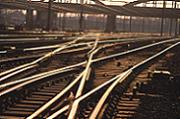European railways: Commission promotes interoperability and competitiveness
25/01/2012

Technical background
The concept of European Train Control System (ETCS) is not new: there are over 20 national systems for automatically controlling the speed of trains. Unfortunately, these national systems are incompatible with one another. To be able to circulate on networks equipped with different systems, either the engines must be changed at the borders (which means a considerable amount of time is lost) or the engines must be equipped with different on-board systems compatible with the different track systems used by the different networks (which increases costs and the risks of breakdown). Either way, this creates a rift in the single market and an obstacle to free movement.
This has an especially adverse impact on goods transport. Although rail transport should be more competitive over long distances, each border adds significant extra costs and delays, translating into market losses and saturation of the road network.
The European Rail Traffic Management System (ERTMS) could significantly increase the competitiveness of rail transport. This is particularly true for freight when the system is deployed in a coordinated manner along a corridor and is accompanied by relevant measures, such as harmonisation of the operating rules or enhancement of the infrastructure if necessary. On the Rotterdam-Genova corridor, for example, the volume of goods transported could be doubled by 2020, which would be the equivalent of one more heavy goods vehicle passing along this route every 37 seconds.
The ERTMS is a major industrial success for Europe. Its performance and its cost mean that it has rapidly gained acceptance even beyond Europe and it is currently the global reference standard, used on all new lines.
Today, in Europe, more than 4000 km of lines are equipped with ETCS. Moreover, the equipment of more than 4000 additional kilometres has already been contracted, thus indicating that the length of ETCS equipped lines will more than double over the next two or three years and the equipment rate is expected to further increase over the coming years.
See also:
Contacts :
Helen Kearns (+32 2 298 76 38)
Dale Kidd (+32 2 295 74 61)


